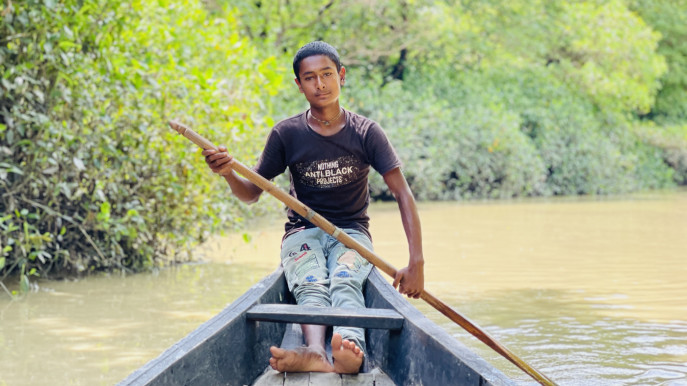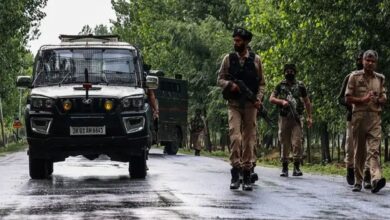The children of Ratargul swamp go to school, sing songs and sail
Teenage boatmen like Jhantu and Ratan in Ratargul Swamp Forest are the ones that make the trip to the swamp worth it, and they do it while balancing school and work

By Md Tajul Islam
When we visited the boat station of Sylhet’s Ratargul Swamp Forest last weekend, the most glaringly unseemly sight was that of teenagers – who should have been at school or playing – waiting for passengers with their wooden dinghy boats.
“Do you not go to school?” we asked a 15-year-old majhi (boatman) who was rowing us into the depths of Ratargul.
Jhantu Majhi smiled and said he gave his SSC and failed in English. He will try again next year.
Along the way, Jhantu acted more like a guide and less like a boatman, showing us around every beautiful and quiet spot of Ratargul.
The surreal nature of the swamp forest makes it easy to get lost in the view, but Jhantu acted as a constant reminder of a grittier reality.
He said he liked to sail boats and talk to tourists.
Besides, this also let him earn some extra bucks, even though he was reluctant to how much he made per day.
Jhantu also said he can sing, but did not feel like it yet.
The sun was at its highest point at that time of the day. So we let him be and focused on the beauty of the swamp forest.
Around 20 minutes in, we started hearing people singing and realised that we were reaching a point where many of the small waterways, one of which we were in, connected. There, we saw many more boatmen, the same age or even younger than Jhantu.
They were all singing and looked like they were having the best time of their lives.
We mostly went to Ratargul to enjoy some quiet time and listen to the songs of nature. So the loud crowd with their energetic music wasn’t helping much. Nevertheless, we made a pit stop, captured many photos, tried sailing the boat for a while (Jhantu was a great teacher) and asked him to take us through a quieter path.
Just as we went far enough from the other boats, I was recording the greenery and birds chirping in Ratargul, and Jhantu felt like singing.
He started with a modified version of “Amar Mon Boshena Shohore” and continued with some sad songs, mostly about heartbreaks – songs that I have never heard before.
Jhantu was singing from his heart while sailing the boat in a rhythm.
If he had sailed a little faster, he would have been able to get back to the boat station, take some rest, and take the next travellers sooner. But he did not seem to care.
All Jhantu cared about was giving us the best possible time while we were on his boat. He kept giving us as much information as he knew about the swamp forest and the best time to visit, which is the beginning of the rainy season.
On our return, we had the chance to talk to another boatman younger than Jhantu. Ratan, the 12-year-old majhi, was a student of class 7. But his strength with the paddle surpassed Jhantu as he was the clear winner of the race they started as soon as they saw each other.
We spent only two hours at Ratargul Swamp Forest, and we left with some very good memories, thanks to Jhantu.
We also left with the knowledge that the beauty was not just in the stillness of the swamp; it was also in the songs that rung out through the forest, from the mouth of babes.




